2023.04.01
New workstyles! - Strategic Partners Work Styles (SWS)
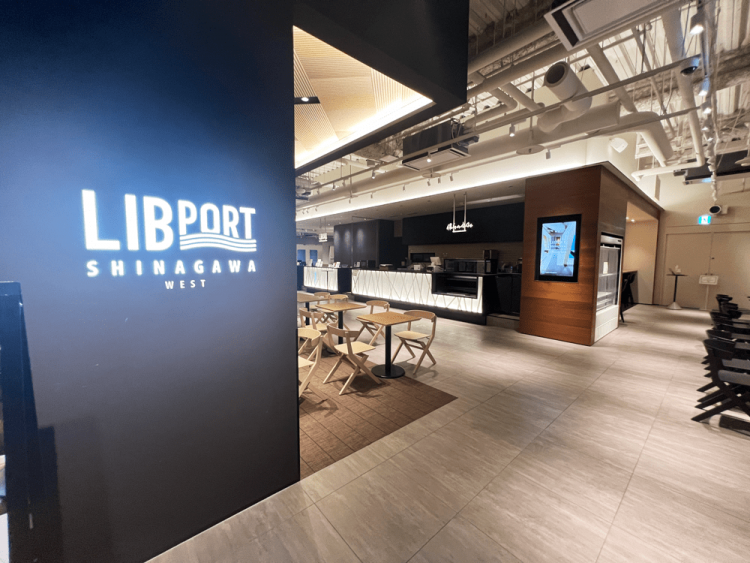
A new style of work that combines the knowledge gained to date with the latest technology and the office environment.
Since the company’s inception, we have been exploring new forms of workstyle while adopting flexible working hours and telecommuting, etc. Office environments are becoming increasingly diverse, such as the innovative evolution of remote technology through the Corona disaster and the rise of shared office space. Strategic Partners has therefore combined its knowledge with the latest technologies and office environments to promote the Strategic Partners Workstyle (SWS).
Two key points are as follows.
A) hybrid workstyles
Hybrid workstyles are a combination of traditional office work and remote work. By introducing a hybrid work style, it is no longer necessary to gather all members of the workforce in an office, so office space can be made smaller and less labour-intensive, saving costs, while the extra money can be transferred to increased staff remuneration and customer returns (lower costs). As for employees, it also allows them to work more flexibly and achieve a better work-life balance.
office work
Office work is carried out in dedicated offices that have been created in recent years to realise a hybrid work style. The head office can be used for work that requires confidentiality of information, creative and other staff who want to concentrate can work in a private space, staff who want to brainstorm can work in an open space, staff who want to participate in a web conference can work in an enclosed PHONE booth, and staff who want to rest can rest in a rest space, all on the same floor. The environment can be changed according to the type of work and changes in physical condition, while still being on the same floor.
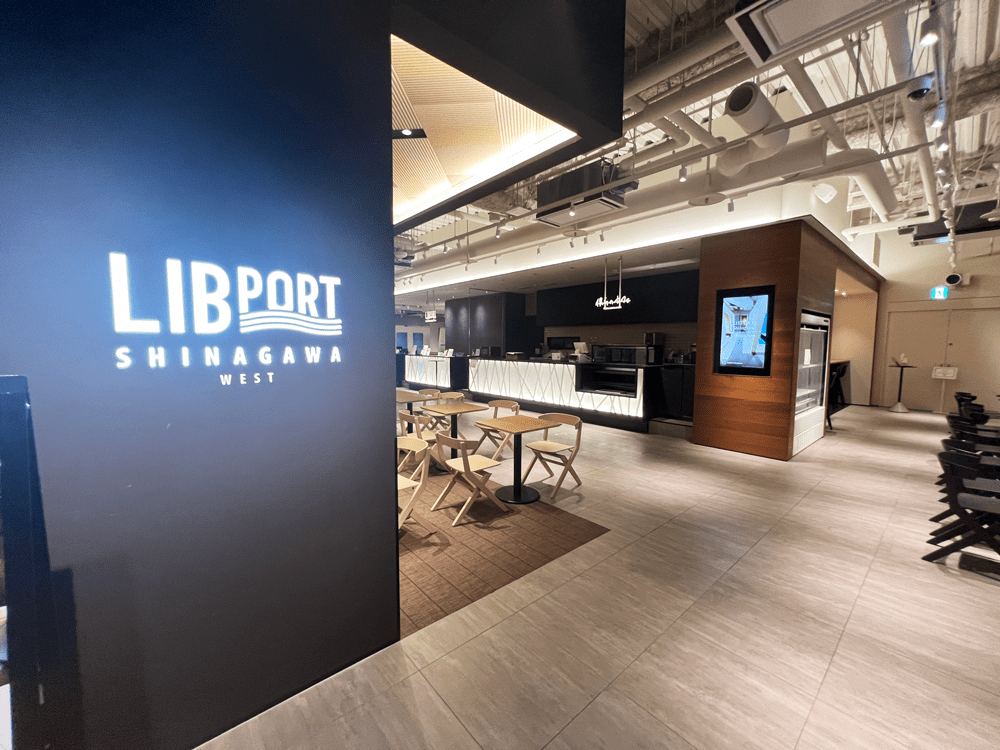
LIBRORT Shinagawa - STPT has decided to move in as a dedicated office for hybrid working.
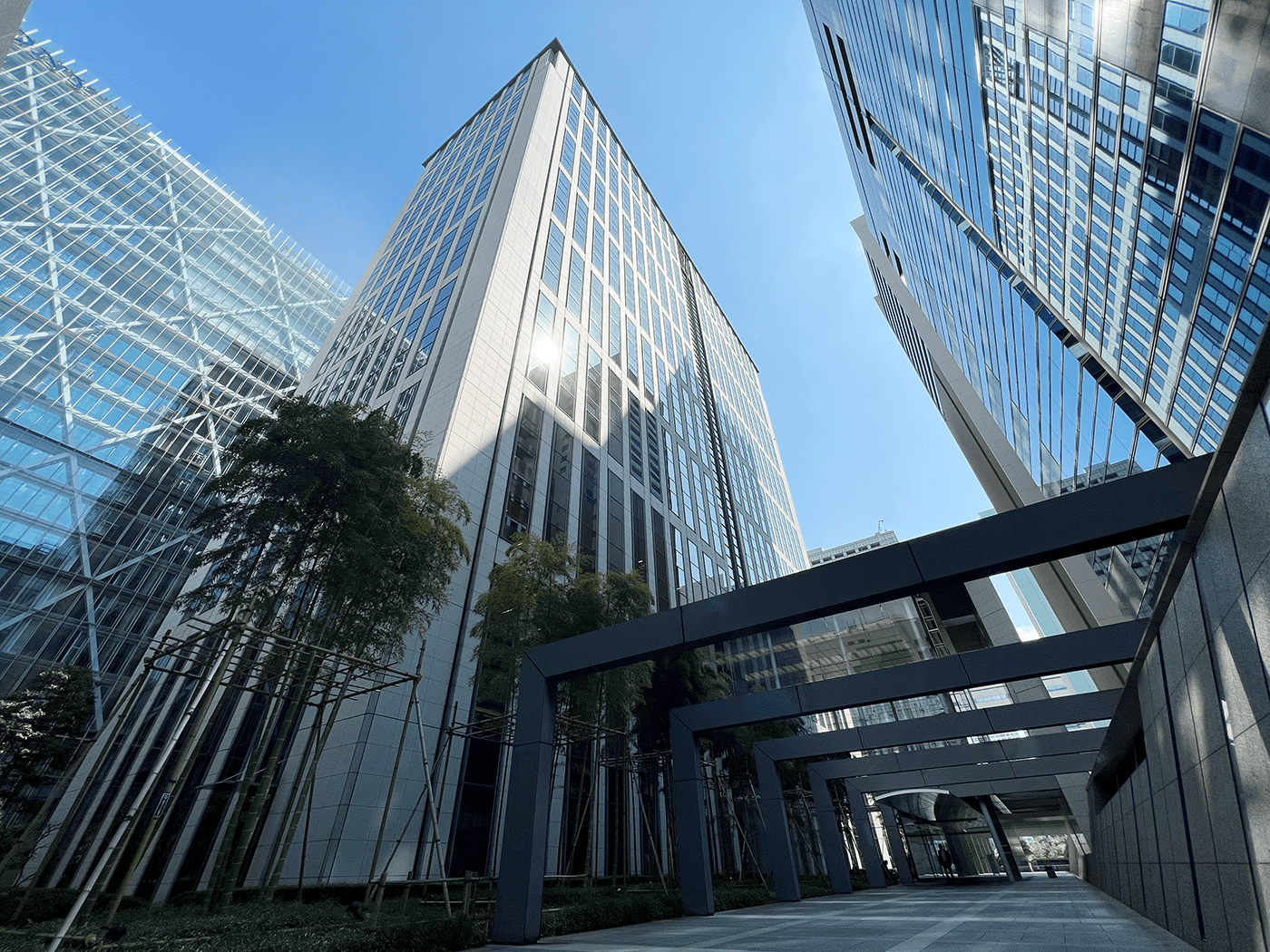
Exterior view of the building(W Bldg.)
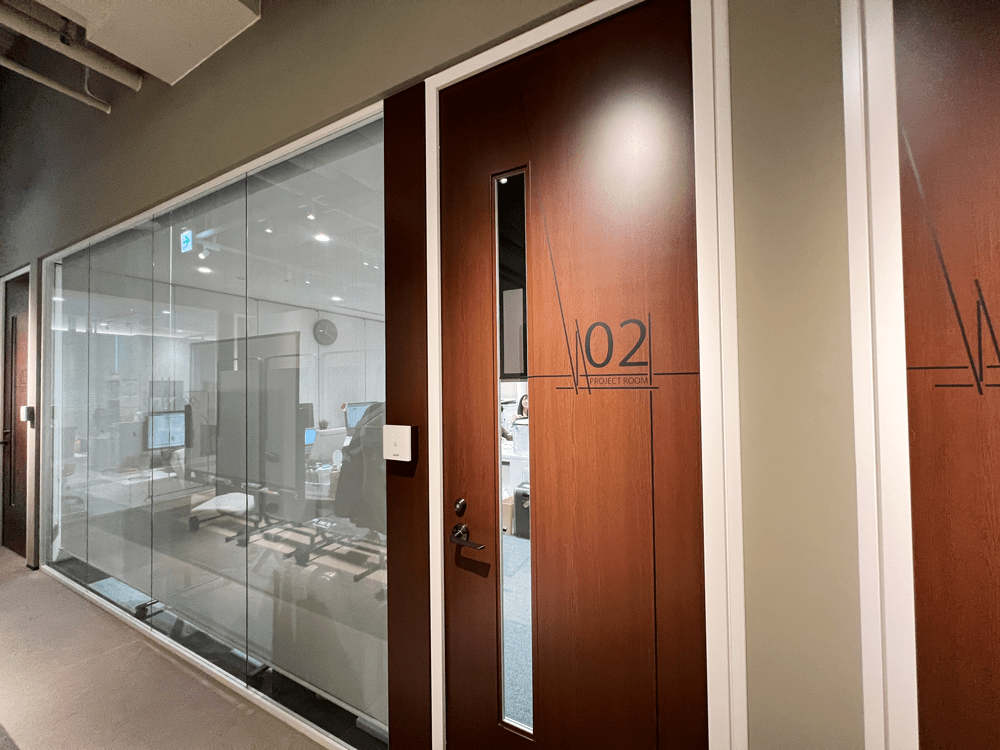
The head office
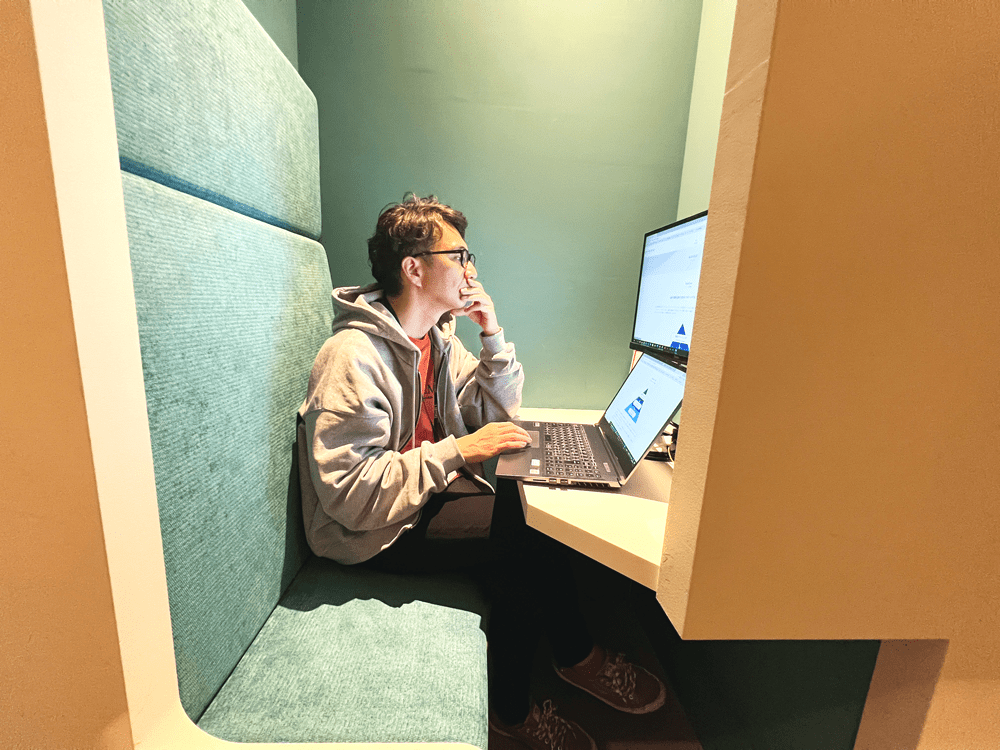
Private space
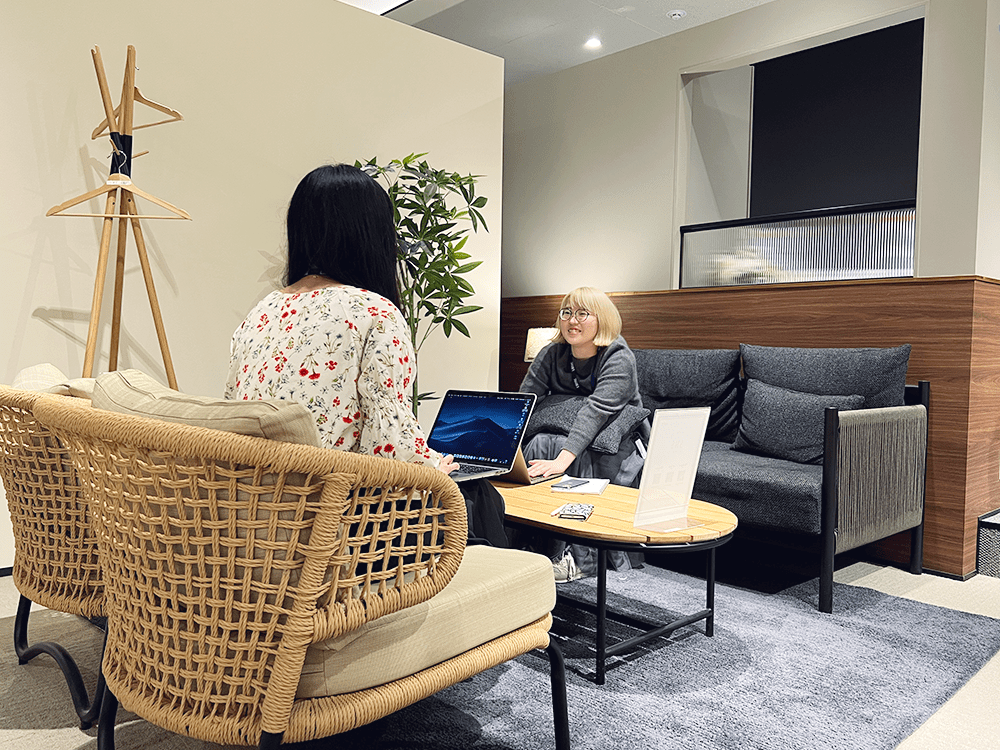
open space
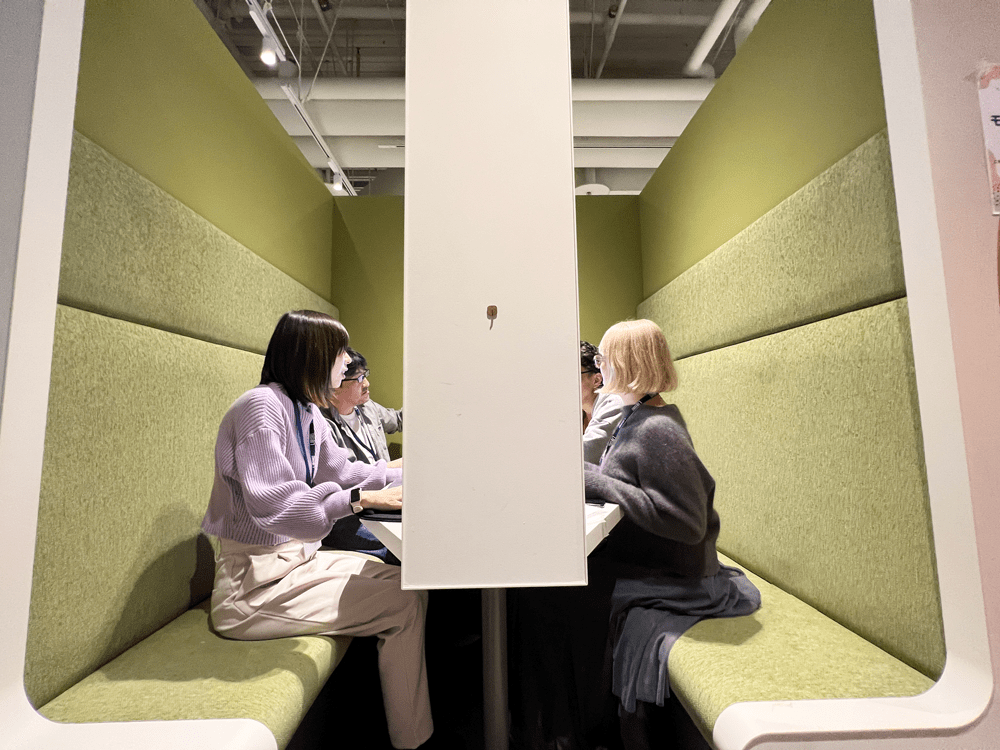
MTG booth
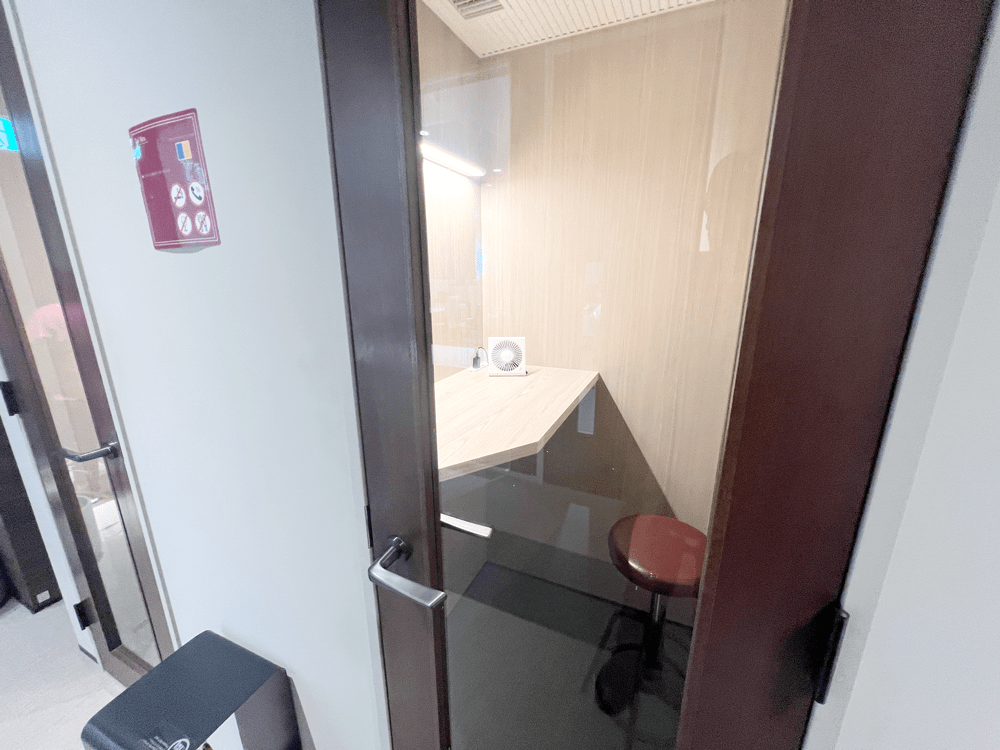
PHONE booth
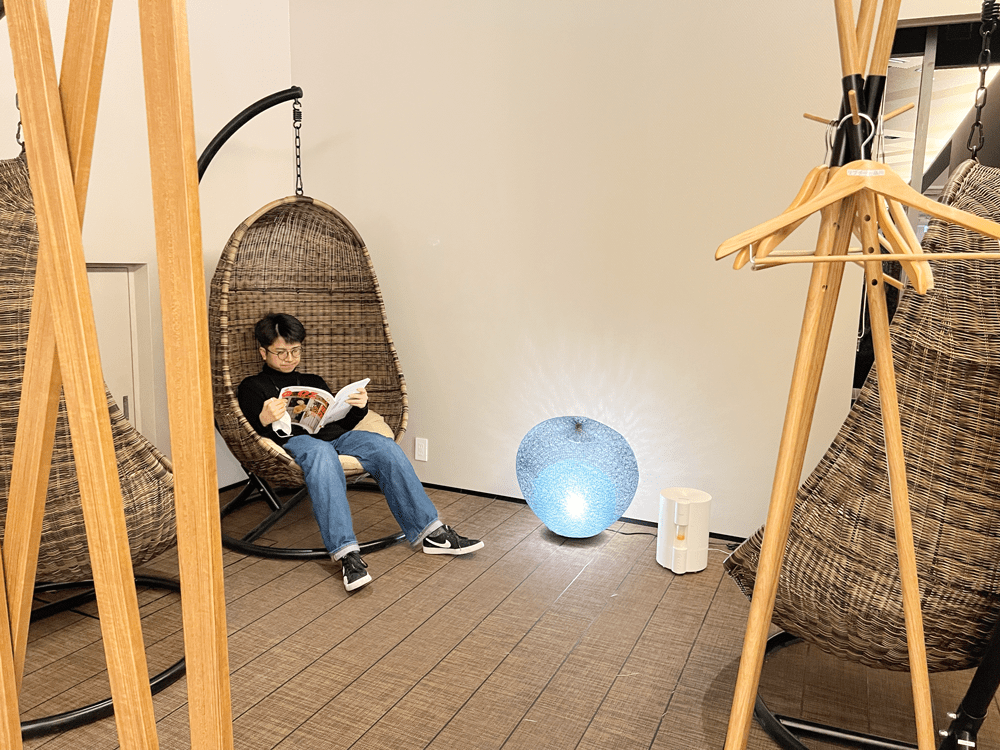
Rest space
*The space outside the head office is a shared space provided by LIBPROT Shinagawa.
Remote work
Remote working can also play a role in boosting work motivation.
For example, it eliminates commuting time and preparation for work, so you can relax in the morning, and it also relieves the stress of working in the same space as other staff. This reduces job dissatisfaction and makes it easier to focus on the task at hand. Another advantage is that you can work in your preferred environment, with your favourite music and in your favourite place. The time created by remote working can be used to pick up and drop off children, or to care for a family member while working for a company.
Furthermore, in the future, the place where you work will no longer be limited to the real world. Currently, we make full use of online and cloud systems such as zoom and Teams, but in the future, we would also like to work towards the realisation of virtual offices, such as a method where people can virtually come to work in an office that exists in a virtual space (virtual office) in order to realise face-to-face-like communication. In the future, we would also like to work towards the realisation of virtual offices, such as a method of coming to work virtually in an office that exists in a virtual space (virtual office) to realise face-to-face communication.
Use of flexible working hours
SWS has adopted a flextime system (with application standards based on internal regulations), based on the diversity of working places and working time as a pillar of the aforementioned hybrid working system. The flextime system allows staff to choose the times when they can concentrate on their work, thereby making it possible to save time by improving efficiency and making it easier to balance work and private life.
In the future, we are also considering adopting a super-flex system, in which core hours are abolished.
In the flextime system, employees decide when to come to work and when to leave work, but there is a set period of time, known as core time, during which they are required to work. The Superflex system does not have these core hours and allows employees to choose their working hours more flexibly.
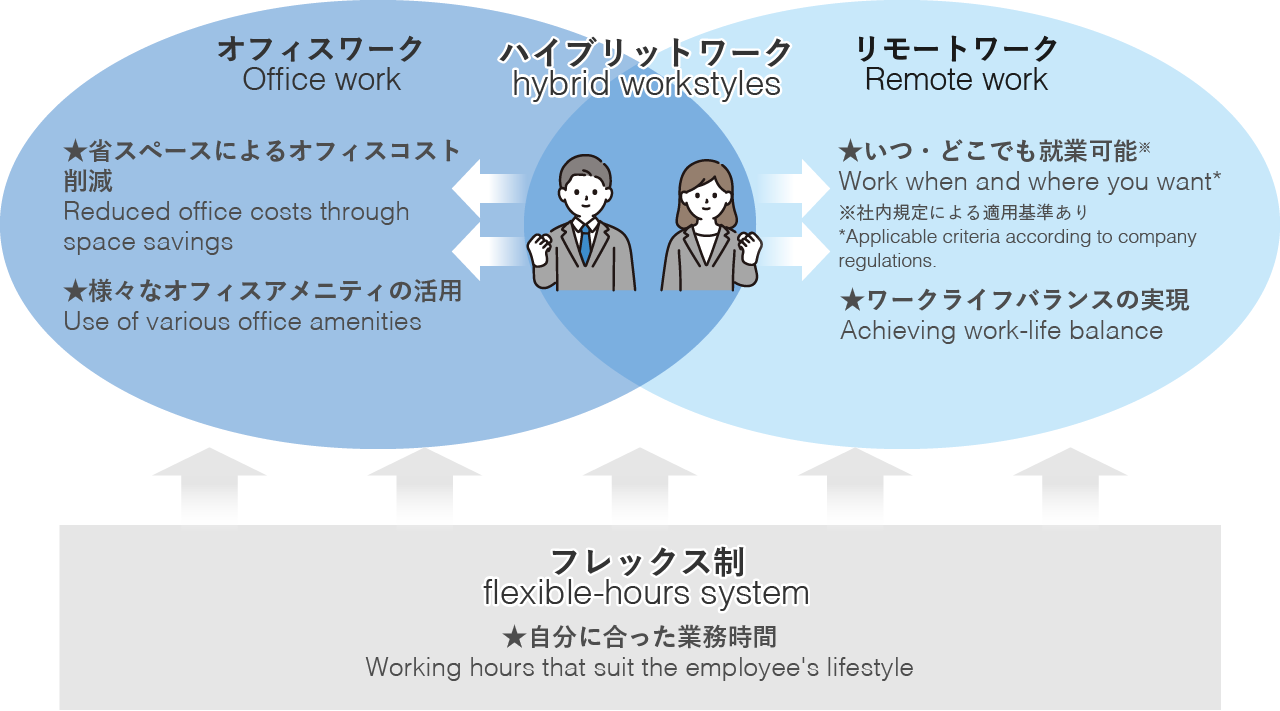
summary
The Corona disaster has triggered a structural change in terms of the way we work.
Whenever you visit a client company, have you ever seen an empty office and wondered if you really need an office, or if this cost might be a waste?
In addition, with the spread of remote working, the need for a location-independent working style has become indispensable due to its convenience and efficiency. At the same time, remote working has proved unsuitable for fostering communication and team building.
Many companies are now scaling back telecommuting and returning to office work. There has certainly been a renewed awareness of the importance of face-to-face meetings.
SWS will be a new way of working that utilises and complements the advantages and disadvantages of both this office work and remote work, and we will continue to make further updates to ensure that society, companies and staff can pursue happiness through the promotion of SWS.
